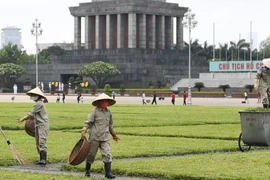Don Lam, its co-founder and CEO, said the tourism industry contributed 10-15 percentto the country’s economy and employed 1.3 million people, but had come to astandstill like elsewhere in the globe due to COVID-19.
“Weestimate that tourist arrivals to Vietnam could fall by at least 60 percent in2020 after falling nearly 40 percent in the first four months of this year.”
It would probably take two years for the global tourism industry to recover.
One idea to reboot the industry was “safe haven tourism” by creating confidencein both visitors and destinations that health and safety issues were fullyaddressed.
“We encourage a low-risk/high-return strategy be applied where Vietnamspecifically targets higher spending tourists from countries with low risk ofCOVID-19 complemented by controls that lower the risk of new cases occurring inthe country.
The Government could partner with resorts and airlines to enable visitors toonce again enjoy travel while minimising the risks associated with the virus.
They could avoid having to be quarantined and instead stay at designatedresorts confident the property had been sealed from the virus.
Resorts participating in this programme would need to be large, integratedproperties with compelling attractions such as nice beaches and/or gamingfacilities. This could even lead to the Government declaring entire islands(such as Phu Quoc or Con Dao) “safe haven tourism zones”.
Critically, steps would need to be taken to ensure that visitors were notexposed to COVID-19 while traveling from their home country to the resort andat the resort.
Visitors would need to be tested for the virus before boarding a flight toVietnam. Daily temperature checks of all guests and employees would need to bedone at the resort and all employees would need to live within a designatedquarantine area.
Contact tracing procedures would also need to be established, all guests andemployees might be required to download a geo-tracking app on their mobilephones and carry it at all times and the standard social distancing measureswould also have to be maintained.
Even during the last economic recession, some consumers had the financialability to take holidays.”
Recent surveys found that people were keen to travel once again when it wassafe to do so.
“The key to encouraging people to travel again is to minimise the risk as bestas possible. People will not travel if they fear they could become ill. This isone reason we believe Vietnam will benefit.”
Vietnam’s outstanding record in containing the COVID-19 pandemic could appealto visitors.
The obvious countries to target for a programme like this would be China and theRepublic of Korea because of their geographic proximity and because they hadalready “flattened the curve” and had COVID-19 under control.
Prior to the outbreak, tourists from these two countries made up almost half ofall foreign tourist arrivals in Vietnam.
Vietnam would need to enter into agreements with these countries to enable theircitizens to travel to Vietnam as “safe haven” and avoid quarantine whenreturning home.
Tourists from those countries could be attracted to Vietnam because it was theonly country in the region with large areas filled with resorts that had littleCOVID-19 risk.
There is probably pent-up demand from honeymooners in these countries who havenot been able to travel, and Vietnam could even offer visitors the ability tohold destination weddings – given that group gatherings of over 30 people are generallyprohibited in most geographies in the world now.
“Vietnam’s beautiful destination will enable these couples and their familiesand friends to celebrate their wedding properly and safely.”
The country could attract new visitors who had not been interested in visiting itbefore.
Domestictourism spending was growing by nearly 7 percent annually, and contributed 40 percentof the country’s tourism revenues.
Since it might be difficult for Vietnamese to travel abroad, persuading them totravel here would obviously be easy.
But Vietnamese tourists tended to visit the same places such as Da Lat, Vung Tauand Da Nang year after year. Vietnam had so much to offer and the privatesector and the Government needed to consider how they could do more to promoteother destinations and locations./.






























